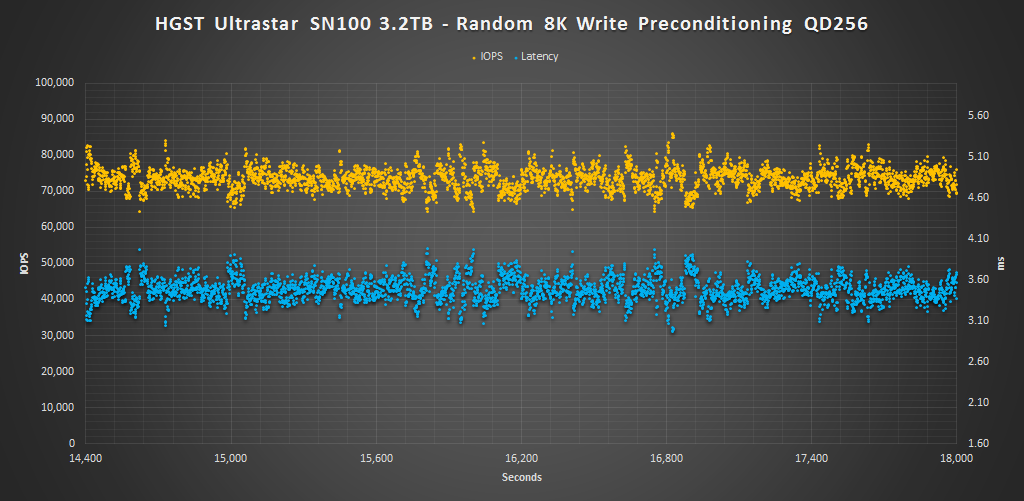8KB RANDOM READ/WRITE
To measure 8KB random read/write performance do the same preconditioning as we did for 4KB performance. The drive is first secure erased to get it in a clean state. Next, the drive is filled by sequentially writing to the RAW NAND capacity twice. We then precondition the drive with 8KB random writes at QD256 until the drive is in a steady state. Finally, we cycle through QD1-256 for 5 minutes each for writes and then reads. All this is scripted to run with no breaks in between. The last hour of preconditioning, the average IOPS, and average latency for each QD is graphed below.

8KB preconditioning follows a similar trend to that of our 4KB precondition results. IOPS range about 15K from least to most and average around 75K. Latency during 8KB write at QD256 ranges about 0.80ms and averages at around 3.50ms.


When looking at the 8KB read performance we can see that the Intel drive has a slight lead in the higher QDs, however, again, the HGST SN100 is the clear victor in lower QDs. The SN100 was able to reach a max of 384K IOPS, which is nearly in line with its 385K rating. The 8KB read latency performance is very well managed again, at lower QDs. Only once it reaches QD64 does the Intel take the lead.


In terms of write performance it is able to reach a max of 75K IOPS and shows a slight lead over the Intel P3608 up until QD64. What is so great about this is that it is still able to reach 73K at just a QD8, which is very impressive compared to the Intel SSD. Looking at the latency per QD we can see that at QD 64 latency is under 1ms and after that, at QD 128 and 256, latency doubles while IOPS remain relatively the same.
 The SSD Review The Worlds Dedicated SSD Education and Review Resource |
The SSD Review The Worlds Dedicated SSD Education and Review Resource | 